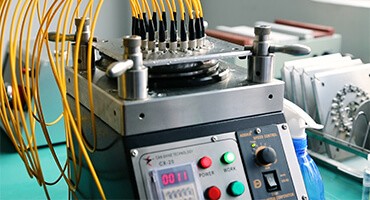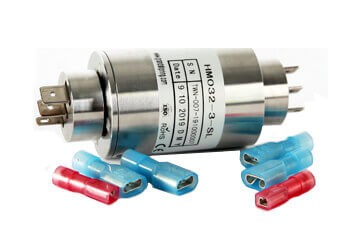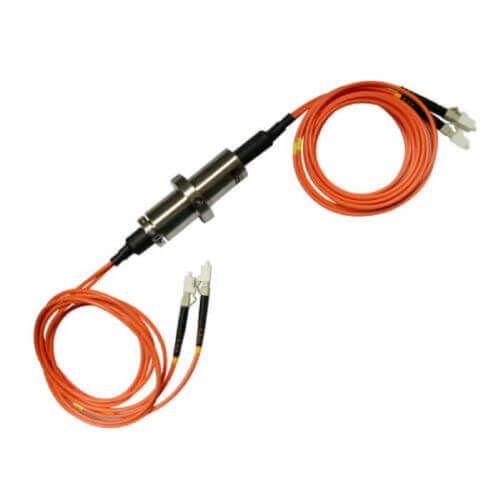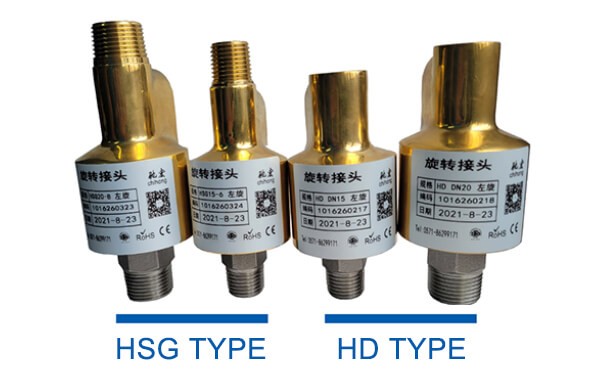In this comprehensive guide, we spin through the intricate world of rotary electrical connections, a key enabler of motion in modern machinery and devices—ranging from wind turbines to medical apparatus. By journeying through their operational principles, types, crucial selection considerations, common challenges, and breakthrough innovations, this article ultimately equips you with the expertise needed to make informed decisions for any application involving these dynamic connectors.
Introduction to Rotary Electrical Connections
Rotary electrical connections, also known as slip rings, act as the unsung heroes in numerous systems where the harmony of both stationary and moving parts is crucial. At its most basic level, a rotary electrical connection is a mechanism that enables the transfer of power or data between a stationary and a rotating platform. It is a specialized type of electrical connector designed to replace traditional wire connections, which can twist, tangle, and eventually fail in systems involving rotation.
The significance of rotary electrical connections becomes clear as we delve into the myriad applications they support. Consider the robust wind turbines adorning fields and offshore landscapes. Each rotation of their massive blades is managed in part by rotary electrical connections, which enable consistent power transmission regardless of blade rotation. Next, step into a hospital or diagnostic center, and you’ll find scanners and imaging devices continually rotating to capture detailed medical images. Here again, a rotary electrical connection delivers the vital link ensuring continuous power and signal distribution.
In the retail world, those dynamic store displays that rotate to catch your eye exploit the unbroken electrical connectivity offered by these connectors. Down to the industrial level, rotary electrical connections are the backbone of many manufacturing machinery operations, facilitating transformative movements and an uninterrupted power supply for critical tasks.
Rotary electrical connections have not always been as efficient and versatile as they are today. Their story is one of continual evolution, shaped by the technological demands of the time. The first iterations of these components were simple mechanisms crafted for rudimentary machines. As technology advanced, these connections underwent successive refinements, gradually transforming into the highly engineered, reliable, and efficient components we see today. They have evolved to support high-speed data transmission, cope with varying environmental conditions, and deliver unmatched performance even in intensive industrial applications.
However, this evolution is far from over. As modern machinery becomes more complex, and the need for efficient, reliable rotation grows, the technological journey of rotary electrical connections is set to continue. Today’s engineers are tasked with developing connectors that can handle higher data rates, minimize signal loss, and resist a broader range of environmental conditions, all while maintaining a compact form factor. The challenge lies in achieving all these, while simultaneously addressing contemporary concerns around environmental impact and sustainability. As we set the stage to delve further into the current state of these components, it becomes clear how understanding the past can prepare us for the future of rotary electrical connections.

Understanding Rotary Electrical Connections
The inner workings and diversified world of rotary electrical connections are fundamental to harnessing their full potential in an array of applications. Let’s highlight the basics and delve into specific types, uncovering their unique attributes, utilities, and the challenges they present.
Definition and Basics of Rotary Electrical Connections
For a clear comprehension, let’s define a rotary electrical connection: It is a specialized interface that provides an unfailing path for signals or power between a stationary infrastructure and a part that revolves. Its core function is to ensure smooth transmission, despite relative motion, effectively allowing continuous system operation without the hindrance of tangled or twisted wires.
While ordinary electrical connectors, like plugs and sockets, facilitate connectivity between two points, the additional feature of rotary electrical connections is their capacity to manage rotational or circular motion. That is, they overcome the physical challenges presented by rotation, maintaining electrical connectivity even while parts of the system are moving relative to one another. This unique feature thus allows them to play a crucial role in a plethora of fields where rotation and unbroken connectivity must coincide.
Types of Rotary Electrical Connections
To appreciate the versatility of rotary electrical connections, it’s beneficial to examine the common types: slip rings, mercury-wetted slip rings, and wireless rotary connections.
The most widespread type of rotary electrical connections is slip rings, sometimes referred to as rotary electrical interfaces. Structurally, slip rings consist of conductive rings attached to the rotating part of the machine and brushes that make contact with these rings. The brushes are stationary, yet they’re designed to maintain contact with the rotating rings, thereby enabling the continuous transfer of power or data.
Used extensively across industries, slip rings can be found wherever there’s a need for power or signal transmission between parts in relative motion. Settings such as wind turbines, cable reels, test equipment, and revolving doors are typical examples.
A variant of the typical slip ring, mercury-wetted slip rings, offers some specific advantages. Mercury’s excellent conductivity and fluid nature make for an almost frictionless, low-resistance connection. This results in negligible noise and minimal wear, delivering superior performance in applications where signal and data integrity are paramount.

However, the use of mercury rings brings challenges, primarily around environmental considerations. Mercury is a toxic substance, and there’s a risk of contamination if the unit gets damaged or leaks. As a result, this type of rotary electrical connection is typically used in specialized applications where their benefits significantly outweigh the environmental risks.
Wireless Rotary Connections
In our increasingly wireless world, the realm of rotary electrical connections is no exception. With the advent of wireless rotary connections, power, and data transmission across rotating interfaces can occur without any physical contact between the stationary and the rotating parts.
This wireless transfer is facilitated by technologies such as inductive coupling or resonant transformers. Eliminating physical contact reduces wear and tear, decreases maintenance needs, and boosts the system’s lifespan, providing major advantages in certain applications that require pristine signal quality or higher durability, like medical imaging devices, undersea turbines, or advanced robotics.
Key Considerations When Choosing a Rotary Electrical Connection
Nailing down the ideal rotary electrical connection for your specific system or application demands some careful thought. This choice ultimately boils down to three primary concerns: the specific requirements of your application, the choice of materials, and the environmental and operational conditions it will function in.
Application Requirements
The precise needs and requirements of your application are typically the first factors shaping your choice of a rotary electrical connection. The rotational speed of your machinery, the power load it needs to carry (current and voltage), and the data transmission rate required are all highly influential in this regard.
The rotational speed is particularly significant, as it directly impacts the required durability and design of the connection. For example, equipment operating at high speeds will require a connection designed to withstand continuous, rapid rotation without interruption or failure.
The power load gives an estimate of how much electrical current and voltage the connection will have to endure. If your machinery operates at high power levels, your connection should correspondingly be rated to handle this power without overheating or causing a system failure.
Similarly, the data rate, especially in digital applications, plays a crucial role. If you’re transferring large quantities of data, or require rapid, real-time data transmission, a rotary electrical connection that can meet this high data rate will be essential.
Material Selection
The choice of materials for your rotary electrical connection—particularly for the contacts and brushes—is another pivotal aspect to consider. These elements are key to the durability, reliability, and maintenance requirements of your connection.
Contacts and brushes made of materials that offer high wear resistance, excellent electrical conductivity, and minimal contact resistance are generally preferred. For instance, materials like gold, silver, and copper alloys are often employed due to their superior electrical performance.
Additionally, the material’s inherent properties should match the application requirements. For instance, gold is soft and will wear quickly in high-speed applications but it’s ideal for low-speed environments where low contact resistance is indispensable.
Environmental and Operational Conditions
Another crucial point of consideration is the environmental and operational conditions in which your rotary electrical connection will operate. Factors such as ambient temperature, relative humidity, dust levels, exposure to corrosive elements, and the potential for vibration or shock can all profoundly impact the performance and lifespan of these components.
For instance, a rotary electrical connection selected for use in a high-humidity environment will need to be robustly sealed to prevent moisture ingress, which could cause electrical shorts or initiate corrosion. Similarly, high-temperature operations will demand materials and design elements capable of withstanding intense heat without degrading.
To choose the right connection for your application, a comprehensive understanding of the operational environment, in combination with the application requirements and the potential material selections, will be essential. This will help you to accurately spec out your rotary electrical connection and safeguard the efficiency and longevity of its operation.
Rotary Electrical Connections: Common Challenges and Solutions
Like any mechanical or electrical component, rotary electrical connections have their share of challenges. Typical problems related to wear and tear, noise during operation, and signal interference can rear their heads during the lifecycle of these devices. However, thanks to engineering advancements, some strategies and solutions can mitigate these challenges effectively.
Challenge 1: Wear and Tear
Possibly the most common challenge with rotary electrical connections is wear and tear–specifically, on the brushes and contacts. Over time, continuous rotation and persistent physical contact between the rotating and stationary parts may lead to gradual wear and degradation of the materials involved, reducing the performance and reliability of the connection.
Solution: Careful selection of materials can help combat wear and tear challenges. Materials with high wear resistance and excellent electrical conductivity–like gold, silver, or specific copper alloys–can promote longevity. Further, using self-lubricating brushes minimizes friction, thus prolonging the service life of the connection. In the case of rotary electrical connections that operate at very high speeds, opting for contactless or wireless rotary connections can eliminate wear and tear issues.
Challenge 2: Noise during Operation
Rotary electrical connections, especially those that use traditional brushes, can encounter issues with noise during operation. This can be observed as electrical noise, which may result in signal interruption and degradation, affecting the efficiency and output of devices relying on these connections for power or signal transfer.
Solution: One way to minimize this operation noise is through the use of specialized materials or designs that reduce contact resistance, like utilizing noble metals, implementing precious metal multi-contacting, or opting for fiber-optic rotary joints for data transmission. Noise issues can also be alleviated through the use of mercury-wetted slip rings, which significantly reduce contact resistance, translating into smoother operation and lower noise. However, the use of mercury should be cautiously considered in light of the associated environmental concerns.
Challenge 3: Signal Interference
Signal interference or loss can be another hurdle, especially in applications where the rotary electrical connection is responsible for transmitting significant amounts of data rapidly. Signal degradation affects the quality of data transmission, leading to inefficiencies in the overall system performance.
Solution: Signal issues can be minimized through the use of shielded cables that protect against electrical noise. Additionally, for systems that require the transfer of sensitive or high-frequency signals, you could consider using rotary electrical connections specifically designed for data and signal transmission. These often involve digital or fiber-optic rotary joints, which mitigate signal loss issues by providing near-perfect isolation between the input and output.
In general, proper installation and regular maintenance of rotary electrical connections are fundamental to countering these challenges. This encompasses regular cleaning to remove dust or debris, periodic inspections for wear and tear, and heat checks to prevent overheating. Correct installation involves ensuring that the connections are correctly aligned and that there is appropriate tension between the brushes and the slip ring to avoid any undue pressure that might accelerate wear. Understanding these common problems associated with rotary electrical connections, along with their practical solutions, is crucial to promoting the long-term proper functioning of your rotating machinery.
Rotary Electrical Connections: Advances and Innovations
The field of rotary electrical connections has not been stagnant; instead, it is marked by continuous evolution and advancement as engineers develop innovative solutions to address the challenges inherent in maintaining electrical contact across rotating interfaces. From materials and design improvements to the burgeoning development of non-contact technologies, let’s dive into these recent technological advancements and innovations.
Advanced Materials and Design Innovations
Materials and design form the bedrock of any technology and rotary electrical connections are no different. Recent advancements have given rise to new materials with superior electrical and mechanical properties, markedly improving the durability, functionality, and lifespan of these connections.
Fiber brushes, for instance, have relocated the traditional contact brushes. These brushes, made of metal fibers bundled together, provide several points of contact, distributing the electrical load and consequently reducing wear and tear.
Additionally, innovations in the design of the slip rings themselves have led to the creation of pancake and through-bore slip rings, tailored for applications where either space constraints or the need for passage of a central shaft are considerations.
Wireless, Contactless Technologies
Perhaps the most groundbreaking innovation in this field is the development of wireless, or contactless, rotary electrical connections. Eliminating physical contact removes several significant hurdles—like wear and tear, electrical noise, and maintenance—by inherently avoiding them.
Inductive coupling is one such technology, which transmits power wirelessly from a stationary component to a rotating one via magnetic fields. Another wireless technology, capacitive coupling, utilizes electric fields for the same purpose. Both techniques are paving the way for ground-breaking applications in fields demanding high-speed transmission or environments where traditional connections falter, like under-sea or space applications.
Fiber Optic Rotary (FORJ) Joints
One particular advancement worth mentioning explicitly is the emergence of Fiber Optic Rotary Joints (FORJs). Designed for high-speed data applications, these devices send signals through a fiber-optic connection, allowing for the high-speed transfer of data across rotating interfaces while minimizing signal degradation or loss.

Impact of Innovations
These advances have far-reaching consequences, directly contributing to enhanced performance through increased data speeds, reduced signal noise, and improved durability from less wear and tear.
Moreover, the innovation of wireless connections has opened up new possibilities, making them applicable in environments where prior options would have failed or underperformed, such as underwater, highly corrosive, or extremely high-speed conditions.
The direction of these advances also lends to the expansion into new industrial sectors otherwise untouched by traditional rotary electrical connections. Developments in fiber optic rotary joints or soft magnetic composites for high-frequency inductive coupling are finding application in areas like telecommunications, aerospace, and advanced robotics, underlining the wide-ranging impacts these innovations portend for the evolution of technology shortly.
Rotary Electrical Connections: User Concerns
When committing to rotary electrical connections, users typically focus on several key areas of concern to ensure that their choice meets their application’s needs, aligns with their budget, and ensures operational safety. This section will delve into these user concerns, focusing on safety and maintenance, cost and lifespan, as well as customization possibilities, and the importance of manufacturer support.
Safety and Maintenance
Operating any electronic or mechanical device entails inherent safety risks that one must consider. Rotary electrical connections, with their moving parts and electrical currents, are no exception. It’s crucial to follow manufacturer guidelines regarding safe operation, which typically relate to proper installation, alignment, and tensioning, and avoiding overloading the connection beyond its rated capacity.
Maintenance is an integral part of safe and efficient operation. Regularly scheduled inspections can detect signs of wear and tear or overheating early, allowing for timely repairs or replacements, and preventing system failure. Cleaning to remove dust and debris, especially in highly polluted environments, can minimize the risk of electrical shorts, further enhancing operational safety.
Cost and Lifespan
The cost and lifespan of rotary electrical connections vary widely based on the chosen model, its application, operating conditions, and the level of maintenance provided. More advanced models (for instance, those featuring advanced materials or contactless technologies) may come with higher upfront costs but can offset this with their extended lifespans, reduced maintenance requirements, and enhanced performance.
On the other hand, more traditional models, like brush-based connections, may be cheaper initially but could incur higher operational costs due to frequent maintenance or earlier replacement dates. users need to consider the total cost of ownership over the projected lifespan of the connection, not just the upfront cost when selecting the most cost-effective option.
Customization and Support
Different applications and systems will have diverse and specific needs. Customization options offered by manufacturers can cater to such specific requirements, tailoring rotary electrical connections to the end-users unique needs, whether that means adjusting contact materials, adapting the connection for space-constrained environments, or making it suitable for high-speed or high-data-rate applications.
However, the value of a sound manufacturer support system cannot be understated. With troubleshooting guidance, extensive warranties, and experienced customer service teams, manufacturers can provide the necessary expertise and assistance to optimize the end user’s experience. Whether it’s aiding with a successful installation, conducting routine inspections, or supporting through any unforeseen technical difficulties, robust manufacturer support can be invaluable in extending the lifespan and overall success of your rotary electrical connection.
By addressing and understanding these user concerns, you can make informed decisions about selecting, installing, and maintaining rotary electrical connections, helping to ensure safe operation, dependability, and cost-effectiveness tailored to your specific needs.
Conclusion
Our exploration of rotary electrical connections has covered their essential role, selection considerations, challenges, and the latest advancements. Understanding the specific requirements of your application is critical for choosing the right solution. Collaboration with experienced manufacturers is recommended for tailored counsel and cutting-edge solutions.
FAQs about Rotary Electrical Connections
Q1: Can rotary electrical connections be used in wet or outdoor environments?
A1: Yes, rotary electrical connections can be designed to withstand wet or outdoor environments. Look for models specifically rated for weather or IP (Ingress Protection) ratings that certify their resistance to elements like water and dust. However, always consult the manufacturer’s guidelines for maintenance and care in such conditions to ensure longevity and reliability.
Q2: How often do rotary electrical connections need maintenance?
A2: The maintenance frequency for rotary electrical connections depends on their design, the environment they operate in, and their usage intensity. Traditionally, models with mechanical contacts (e.g., brush and slip ring assemblies) may require more frequent checks for wear and tear compared to contactless models. A general rule is to perform visual inspections and cleaning every few months, with a more thorough check annually, but always refer to the manufacturer’s specific maintenance recommendations.
Q3: Are wireless rotary electrical connections better than traditional contact-based connections?
A3: Wireless or contactless rotary electrical connections offer distinct advantages, including reduced wear and tear, minimized maintenance, and excellent performance in harsh environments. However, “better” is relative to the application. Consider factors like the operating environment, required transmission speed, and cost. For high-speed data or power transmission with minimal physical wear concerns, wireless connections might be superior. For cost-sensitive applications requiring high reliability and simpler technology, traditional contacts might be preferred.
Q4: What impacts the lifespan of a rotary electrical connection?
A4: Several factors can impact the lifespan of a rotary electrical connection, including the operating environment (i.e., exposure to corrosive substances, dust, moisture), electrical load, and mechanical stress. Adhering to recommended operational limits and regular maintenance can significantly extend their service life. Also, opting for models designed with advanced materials and technologies that suit your specific application can improve durability.
Q5: Can rotary electrical connections transmit data along with power?
A5: Yes, modern rotary electrical connections can transmit both power and data simultaneously. There are designs available, such as hybrid slip rings, which incorporate both electrical contacts and fiber optic rotary joints for data transmission. This capability is particularly beneficial in sophisticated applications requiring high-speed data exchange alongside power supply, like in some medical equipment or robotics.
Q6: Is it difficult to install a rotary electrical connection?
A6: The complexity of installing a rotary electrical connection can vary based on its design and the application. Many manufacturers design their products with ease of installation in mind, offering detailed manuals and customer support. Basic installations might be straightforward, but for complex systems or environments, it might be prudent to consult with a professional or the manufacturer for guidance.
Q7: How can I ensure I’m choosing the right type of rotary electrical connection for my application?
A7: Choosing the right rotary electrical connection starts with a thorough understanding of your application’s requirements – consider factors such as the necessary power and data transmission rates, environmental conditions, space limitations, and budget. Consulting with manufacturers and utilizing their expertise to match your needs with their products’ capabilities often yields the best outcome. Do not shy away from asking for custom solutions if standard options do not fully meet your requirements.
See What We Can Do

